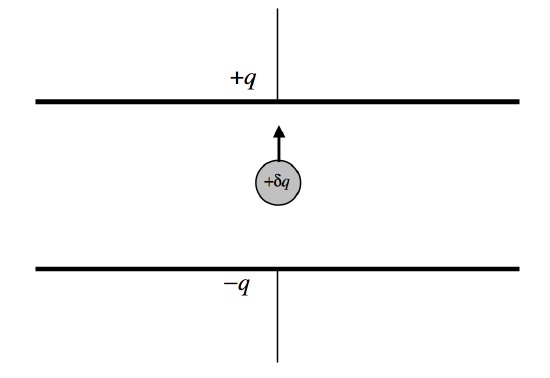5.10: Energy Stored in a Capacitor
( \newcommand{\kernel}{\mathrm{null}\,}\)
Let us imagine (Figure V.10) that we have a capacitor of capacitance C which, at some time, has a charge of +q on one plate and a charge of -q on the other plate. The potential difference across the plates is then q/C. Let us now take a charge of +\delta q from the bottom plate (the negative one) and move it up to the top plate. We evidently have to do work to do this, in the amount of \frac{q}{C}\delta q.

\text{FIGURE V.10}
The total work required, then, starting with the plates completely uncharged until we have transferred a charge Q from one plate to the other is
\frac{1}{C}\int_0^Q q\,dq=Q^2/(2C)\label{5.10.1}\tag{5.10.1}
This is, then, the energy U stored in the capacitor, and, by application of Q = CV it can also be written U=\frac{1}{2}QV, or, more usually,
U=\frac{1}{2}CV^2\label{5.10.2}\tag{5.10.2}
Verify that this has the correct dimensions for energy. Also, think about how many expressions for energy you know that are of the form \frac{1}{2}ab^2. There are more to come.


